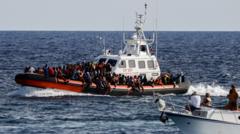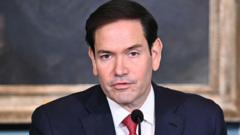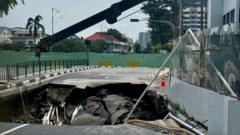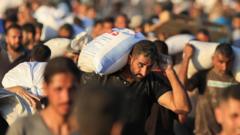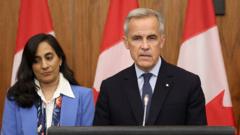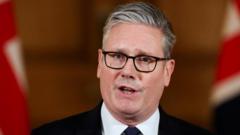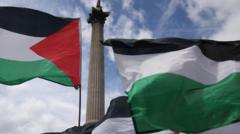The humanitarian situation in Gaza remains dire as Steve Witkoff, President Trump's envoy, tours a controversial aid distribution site, drawing criticism from locals and humanitarian organizations regarding the adequacy of aid provisions amidst escalating violence.
Trump Envoy's Visit to Gaza Aid Site Sparks Controversy
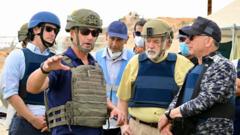
Trump Envoy's Visit to Gaza Aid Site Sparks Controversy
US envoy Steve Witkoff’s visit to a Gaza aid distribution site amid ongoing conflict raises questions about humanitarian support's effectiveness.
Steve Witkoff, the US Middle East envoy, has recently visited a contentious Israel- and US-supported aid distribution site in Gaza, marking the first official engagement of its kind. The visit, which aimed to provide President Trump with a current perspective on the humanitarian crisis, has seen the envoy's motives questioned amid continuous reports of violence surrounding these aid points.
The trip to a Gaza Humanitarian Foundation (GHF) facility, situated near Rafah, included discussions with officials from both the IDF and GHF, alongside US Ambassador to Israel Mike Huckabee. Witkoff emphasized the importance of understanding the pressing humanitarian needs and creating a plan for food and medical aid delivery.
Official claims, including GHF’s report of distributing over one million meals daily, contrast sharply with UN findings that highlight a severe shortfall in nutritional provisions. The UN has condemned conditions in Gaza, referring to widespread starvation as a man-made crisis.
Eyewitness accounts from locals reveal deep-seated skepticism regarding the intentions behind Witkoff's visit. Gazan resident Louay Mahmoud articulated that the envoy would only observe a “narrative” curated by Israel instead of the stark reality of hunger faced by residents. Furthermore, calls for genuine action to lift the blockade and halt ongoing military actions overshadowed the visit, emphasizing that locals are seeking substantive change rather than mere diplomatic gestures.
Former US officials and humanitarian advocates echoed these sentiments, indicating that the reality at ground level exhibits profound human suffering amidst military enforcement. In light of accusations of excessive force by Israel, the situation has been branded a “militarized” aid distribution system that poses a direct threat to Palestinian civilians.
Recent reports indicate that significant casualties have occurred near GHF sites, with a substantial number of civilians killed while seeking food. As humanitarian agencies continue to announce the deteriorating conditions in Gaza, Witkoff’s visit, criticized as a public relations event lacking real impact, underscores the deepening crisis faced by its residents.
The international community is taking note, as humanitarian organizations grow increasingly vocal about the urgent need for changes in both policy and actions, seeking to place pressure on the US to rectify the imbalance of support amidst atrocities documented within Gaza. As additional violence unfolds, the ramifications of such visits will continue to be scrutinized along with the broader implications for peace and stability in the region.


